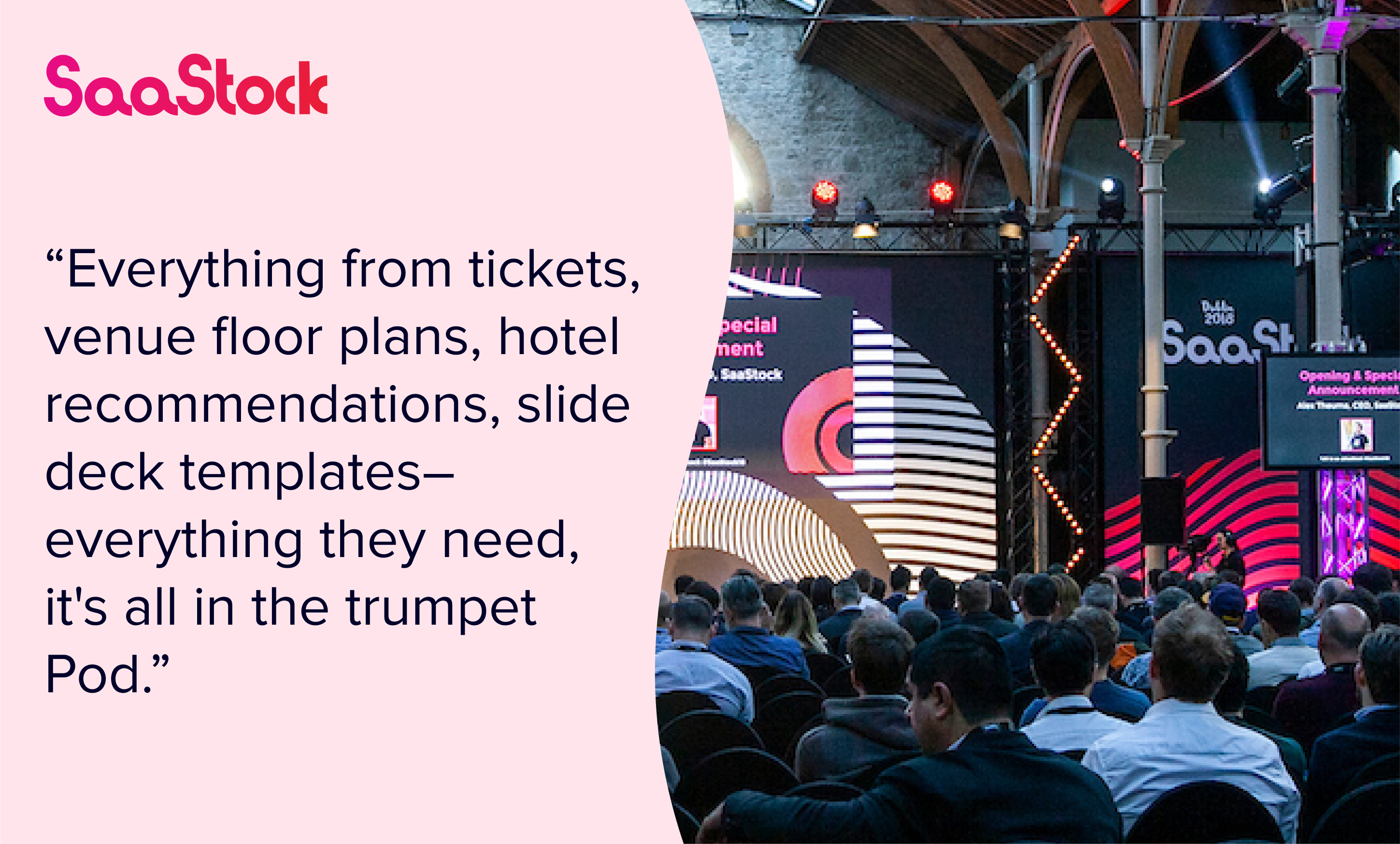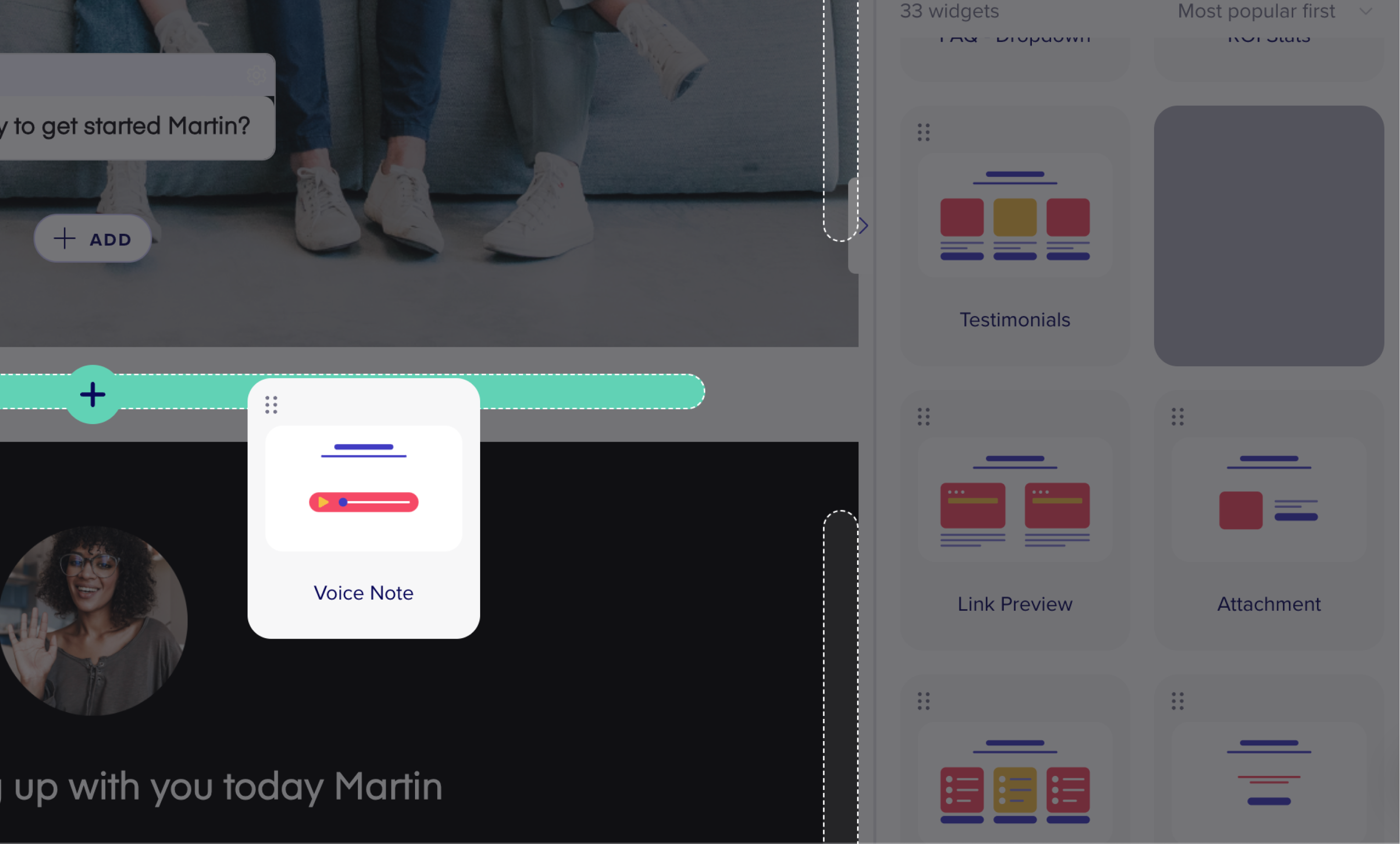The average sales cycle is almost completely online. Accelerated by the pandemic, this underlying trend isn't reversing any time soon. In fact, according to Gartner, by 2025, 80% of B2B sales interactions between buyers and suppliers will occur digitally. Their conclusion: B2B sales needs a digital-first approach.
Digital sales rooms (DSRs) are the solution. With fewer face-to-face interactions, buyers are more sceptical about committing to a particular company. They perform more research and take longer to decide on a solution. DSRs help streamline this process. Companies can provide tailored content, continuously communicate, and track buyer intent signals to boost customer engagement and conversions.
This guide covers everything you need to know about digital sales room software, answering what a deal room is and how it works.
What is a Digital Sales Room?
A digital sales room (DSR), or digital deal room, is a virtual environment designed to enhance a predominately online buyer's journey. Centralised and interactive, it's a space for sales professionals to present their products or services, share relevant content, communicate directly with prospects, and track engagement in real-time.
The concept arose because of the difficulties in managing sales interactions online. Previously, sales professionals travelled from company to company, building relationships and using their charisma and industry knowledge to close deals.
However, as this process moved online, sellers became less transactional and more consultative. B2B buyers spent longer researching online and reading blog articles, eBooks, and guides before reaching out to a sales professional. Most of the buyer's journey was beyond the sales rep's reach.
The best digital sales room software reverses this trend. Rather than relying on communication platforms like email to pick up the slack, digital deal rooms are built explicitly for sales transactions. They replicate the best parts of in-person sales meetings in a virtual format, making it easier for the sales team to reach and engage prospects.
More dynamic and engaging than traditional sales methods, such as email pitches or static presentations, they represent the forefront of sales techniques and technologies, helping companies manage the entire sales cycle from outreach to close.
Key Features of Digital Sales Rooms
Digital sales room software always involves a virtual, customisable space where buyers and sellers interact. Beyond this core concept, however, different platforms host a selection of potential features. As new digital sales room trends occur, as the concept evolves and matures, and innovative technologies (e.g., virtual reality) develop, these features will change.
Currently, the best digital sales room software may include:
- Personalised Content Hubs: Bespoke content spaces that deliver tailored information like proposals and case studies directly to each prospect, making every interaction feel uniquely theirs. The content can change as the buyer progresses through the sale. For example, initially, it may feature introductory industry guides and blog articles, transitioning to case studies, product comparisons, and eventually proposals as the final deal approaches.
- Interactive Communication Tools: Live chat, video calls, and shared browsing that turn conversations into conversions by fostering real-time engagement and immediate connection. These tools allow instant communication or scheduled calls and work seamlessly alongside other communication mediums like email or phone calls.
- CRM and Sales Tool Integration: A seamless merge with your CRM and other sales tools, ensuring a smooth flow of information and activities from one platform to another, keeping your sales engine running without a hitch. Integrating your DSR with your CRM allows you to automate data entry, track sales progress, and personalise the buyer's journey while saving your team valuable time.
- Mutual Action Plans: Collaborative roadmaps created with your prospect, outlining each step towards the deal closure, ensuring both parties are aligned and accountable. Work together to close the deal, establishing your professionalism and capabilities early in the sales cycle.
- Buyer Intent Signals: Track how prospects interact with your content and tools, offering insights that help tailor follow-ups and fine-tune strategies. See which documents are viewed, the duration of views, and overall engagement levels.
- Personalisation and Custom Branding: The ability to customise the look and feel of your sales rooms, aligning them with your brand identity and making every prospect feel like they're getting the VIP treatment. The best digital sales room software also lets you pull a prospect's branding into the DSR.
- Feedback and Surveys: Integrated tools to gather prospect feedback and conduct surveys, providing valuable insights into their experience and expectations. Fine-tune your sales process using these insights to gradually increase your conversion rates.
Benefits of Digital Sales Rooms
Trusting in a sales tool purpose-built for online transactions will revolutionise your sales cycle. Shorter sales cycles and more engaged, collaborative customer interactions are some benefits you can expect. Other potential benefits include:
✔️ Greater buyer engagement is a major benefit of DSRs. B2B buyers are now used to sellers being distant, hidden behind emails and digital communication. However, 78% of business buyers wish sales reps acted more like trusted advisors. Providing personalised content, answering questions, and guiding prospects through the buyer's journey allows buyers to engage more with sellers at every stage in the cycle. Plus, with more dynamic and interactive content – think videos, blog articles, and competitor comparisons – prospects stay interested and invested.
✔️ Streamlining the sales process helps solve the ongoing problem of lengthening sales cycles. Almost 80% of B2B customers complained that their last purchase was "extremely complex" or "difficult." Part of the problem is buyers must navigate an industry they know little about. Through a DSR, you can answer any question as it occurs, eliminating wasted time.
✔️ Improved collaboration and alignment occur thanks to the early interactions. Through tools like mutual action plans, sales teams and prospects work together to reach a deal, staying aligned on goals, expectations, and timelines. Forging a stronger customer relationship also carries over post-deal, reducing the potential for customer churn.
✔️ Deeper insight into buyer actions comes from engagement analytics. Unlike email and other digital sales tools, digital deal rooms track everything a buyer does within the virtual space. Using that data, sales teams can refine their strategies, tailor follow-up communication, and improve conversion rates due to greater buyer understanding.
✔️ Increased personalisation and branding are the hallmarks of digital sales room software. Other digital sales tools, such as email or social media, are one-track mediums. Companies can, at best, add a prospect's name to the email header or segment their audience. DSRs, on the other hand, allow every single room to be tailored to a specific prospect. The branding, content available, design, and more are all customisable. Not only does that make the buyer feel heard and valued, but it also creates a more memorable, high-conversion experience.


.jpg)

.png)

.png)
.png)
.png)
.png)
.png)



.png)


.png)

.jpg)



.jpg)
.png)
.png)
.png)

.png)

.png)
.png)
.png)
.png)
.png)


.png)

.jpg)
.png)
.png)
.png)



.png)
